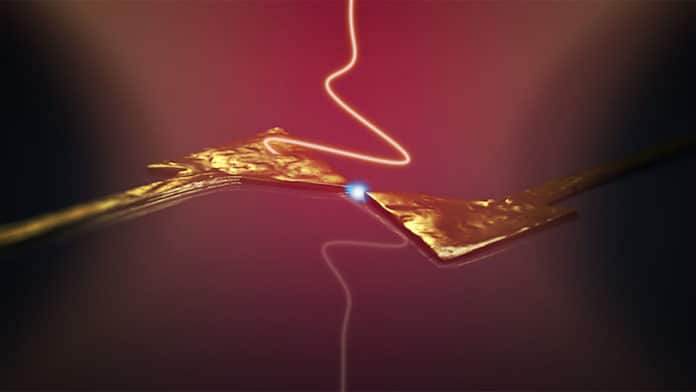By manipulating electrons with light, scientists now could transport them at times below the femtosecond range. In a new study by the European team, including physicists from the University of Konstanz, scientists found that electrons can be induced to move at sub-femtosecond speeds, i.e., faster than 10-15 seconds, by manipulating them with tailored light waves.
According to scientists, the study could have significant implications for the future of data processing and computing.
Contemporary electronic components, which are customarily founded on silicon semiconductor technology, can be turned on or off inside picoseconds (for example, 10-12 seconds). Standard cell phones and computers work at maximum frequencies of several gigahertz (1 GHz = 109 Hz) while individual transistors can approach one terahertz (1 THz = 1012 Hz). Further speeding up at which electronic switching gadgets can be opened or closed utilizing the standard technology has since demonstrated a test.
A recent series of experiments—conducted at the University of Konstanz and reported in a recent publication in Nature Physics—demonstrates that electrons can be induced to move at sub-femtosecond speeds, i.e., faster than 10-15 seconds, by manipulating them with tailored light waves.
Alfred Leitenstorfer, Professor of Ultrafast Phenomena and Photonics at the University of Konstanz (Germany) and co-author of the study, said, “This may well be the distant future of electronics. Our experiments with single-cycle light pulses have taken us well into the attosecond range of electron transport.” Light oscillates at frequencies at least a thousand times higher than those achieved by purely electronic circuits: One femtosecond corresponds to 10-15 seconds, which is the millionth part of a billionth of a second. Leitenstorfer and his team from the Department of Physics and the Center for Applied Photonics (CAP) at the University of Konstanz believe that the future of electronics lies in integrated plasmonic and optoelectronic devices that operate in the single-electron regime at optical—rather than microwave frequencies.”
“However, this is fundamental research we are talking about here and may take decades to implement.”
The challenge for scientists was to develop an experimental set-up for manipulating ultrashort light pulses at femtosecond scales below a single oscillation cycle on the one hand and to create nanostructures suited for high-precision measurements and manipulation of electronic charges on the other.
Leitenstorfer said, “Fortunately for us, we have first-class facilities at our disposal right here in Konstanz. The Center for Applied Photonics is a world-leading facility for the development of ultrafast laser technology. And thanks to our Collaborative Research Centre 767 Controlled Nanosystems: Interaction and Interfacing to the Macroscale, we have access to extremely well-defined nanostructures that can be created and controlled at the nanometre scale.”
The experiment also involved nanoscale gold antennae as well as an ultrafast laser capable of emitting one hundred million single-cycle light pulses per second to generate a measurable current. The bowtie design of the optical antenna allowed for a sub-wavelength and sub-cycle Spatio-temporal concentration of the electric field of the laser pulse into the gap of a width of six nm (1 nm = 10-9 meters).
As a result of the highly nonlinear character of electron tunneling out of the metal and acceleration over the gap in the optical field, the researchers were able to switch electronic currents at speeds of approximately 600 attoseconds.
Leitenstorfer said, “This process only occurs at time scales of less than half an oscillation period of the electric field of the light pulse.”
The study opens up entirely new opportunities for understanding how light interacts with condensed matter, enabling observation of quantum phenomena at unprecedented temporal and spatial scales.
Scientists further planning to investigate electron transport at atomic time and length scales in even more sophisticated solid-state devices with picometre dimensions.
